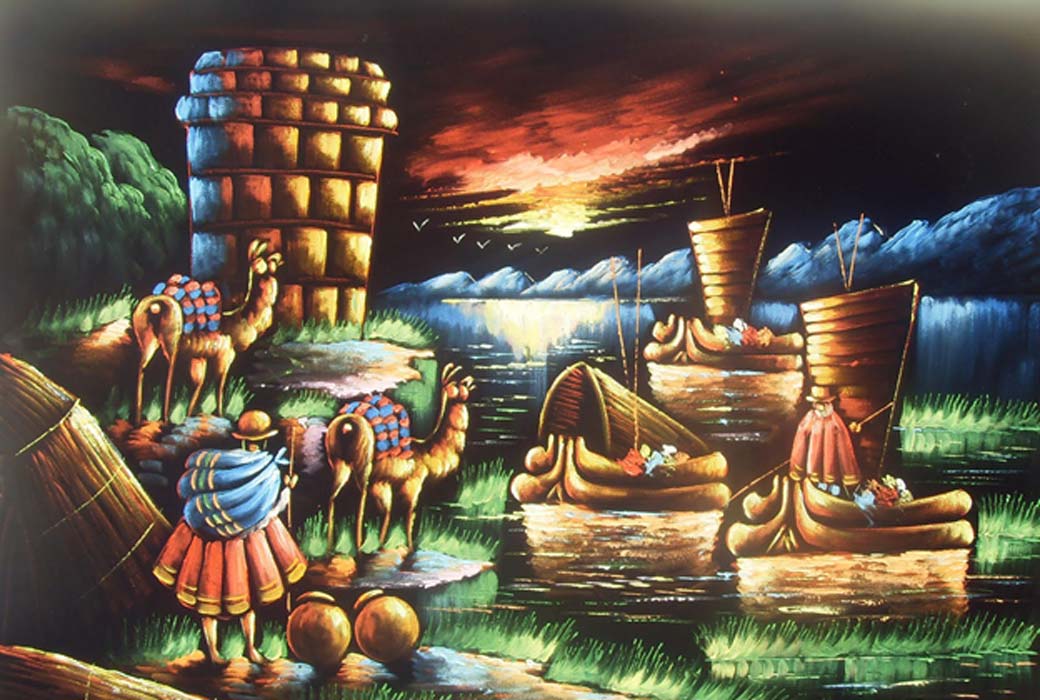For a Metal or Forgotten Parents: The Mysterious Origins of Lake Titicaca’s Name
Value, status, memory, family… These are ideals encompassed in names. Across cultures, the naming of persons and places hold varying levels of significance. The Norse named their swords; the Scottish, their castles. Ancient civilizations named the natural forces of the world because names equaled power and even limited forms of control. As the center of the Inca cosmos, one would expect Lake Titicaca's history to have been documented or mythologized. While archaeologists have made great strides in understanding the famous lake’s pre-Incan history, the origin of its name remains a great mystery.
Many Cultures for One Lake
Because Lake Titicaca was valued by so many different cultures, it likely had more than one name at different times and contemporaneously. Valued most by the ancient Pucará (400BC-100AD) and the Tiwanaku (200BC-1000AD) in particular before the Inca invaders, Lake Titicaca spanned numerous cultures in the region of modern day Bolivia and Peru. The Chiripa culture existed in the area from 1400-850BC, and occupation continued in the region in Chiripan forms until around 100AD. The Aymara people, native to the Andes and Altiplano areas, have thrived along Lake Titicaca since before the Inca and after the Inca conquered the regions in the 15th century.

‘Disembarking on Lake Titicaca’ by Enrique Camino Brent. (El arte en la Educación)
Puno, an area located between the lake and the mountains, saw much evolution from the 17th century onward. And, of course, the valued history of the Uru people cannot be forgotten. The Uru have lived on man-made islands on Lake Titicaca longer than can be remembered and are considered the indigenous people of the water basin region. They have withstood time and continue to live atop Titicaca's waters.
- The Ancient Ruins On and Beneath the Sacred Lake Titicaca
- Lake Titicaca: The Cauldron of Incan Creationism
- Viracocha's Astronomical Creation Engine

Uros floating islands, Lake Titicaca. (Andrew Miller/CC BY NC 2.0)
The lengthy history of the cultures sitting on the banks of Lake Titicaca and the sheer number of cultures who valued the lake (those who are known and even those who are not) likely never called the lake by a shared title.
So how did Lake Titicaca get to be known as such in the present?
Lake Titicaca and Gray or White Metal
It has been proposed that the name "Titicaca" is derived from the Spanish conquerors of the early modern period, though the name itself can be broken into fragmented "words" in native languages as well. Standish (2005) discusses that titi and caca have significance in the language of the Aymara people: titi meaning "lead" or "heavy metal" and kaka (spelled the Aymara way) meaning the color white or gray. However, scholars Bauer and Stanish (2001) suggest the term thakhsi cala as an earlier variation of the name from the 15th century, that was later altered (albeit, probably accidentally) and standardized by the Spaniards. (It should be noted that Lake Titicaca is not the only name of the lake, however an examination of its origin is the intent here.)

Stormy Lake Titicaca. (Public Domain)
Father and Mother of Lake Titicaca
Other theories as to the naming of Lake Titicaca circulate, though the evidence is more hypothetical than factual. One such theory states that Japanese settlers from the Jomon period came to the area thousands of years ago by way of the land-bridge linking modern day Alaska and the east. According to Japanese "myth", a Jomon period lord traveled to South America believing himself prophesized to found an empire across the Pacific Ocean. After arriving in modern day South America and traveling on foot across the vast landscape, the lord and his men discovered a massive lake they called "Chichi-haha" (translated loosely as "father and mother"). This lake was believed by the Japanese leader to be the location of his empire. Over time, the lake's title "Chichi-haha" transformed into "Titicaca."
- The Sacred Meaning of the Reed: From Houses and Boats to Rituals, Ceremonies and Portals
- Is this ‘Temple of Fertility’ in Peru Really a Giant Collection of Stone Penises, or is it a Phallic Fallacy?
- God’s Gate and the Sun Temple: A Mysterious Incan Portal Leading to Other Worlds

Late Jomon statue (1500-1000BC). (CC BY SA 3.0)
Naming Titicaca "father and mother" is quite fitting due to the numerous civilizations that considered the lake central to their way of life. Further, the Uru people who live atop their floating islands continue to utilize the lake as not only a source of sustenance but of dwelling. As the Jomon title states then, the lake truly is the father and mother of the people of the region, having long protected, preserved, and fed those who have come and gone from its shores.

View on Lake Titicaca. (Public Domain)
Top Image: Artist’s interpretation of activity in and around Lake Titicaca. Source:Arturo Astete
Bibliography
Bauer, B., and Stanish, C. 2001. Ritual and Pilgrimage in the Ancient Andes.Texas, University of Texas Press.
Jones, D.M. 2007. Mythology of the Incas. Southwater.
Kawagoe, Aileen. 2014. "The Legend of how Lake Titicaca got its name from Japanese (Jomon period) settlers." Heritage of Japan. Accessed August 17, 2017.https://heritageofjapan.wordpress.com/2014/06/30/the-legend-of-how-lake-titicaca-got-its-name-from-japanese-jomon-period-settlers/
Moore, Jerry, D. 1996. "The Archaeology of Plazas and the Proxemics of Ritual: Three Andean Traditions". American Anthropologist.98.4. pp. 789–802.
Standish, C. 2005. Ancient Titicaca: The Evolution of Complex Society in Southern Peru and Northern Bolivia. Oakland, California, University of California Press.
Takeda, Ariel. 2008. "Establishing Japanese Ancestry." (trans. Andre Soares) Discover Nikkei. Accessed August 17, 2017.http://www.discovernikkei.org/en/journal/2008/8/12/japanese-ancestry/



















